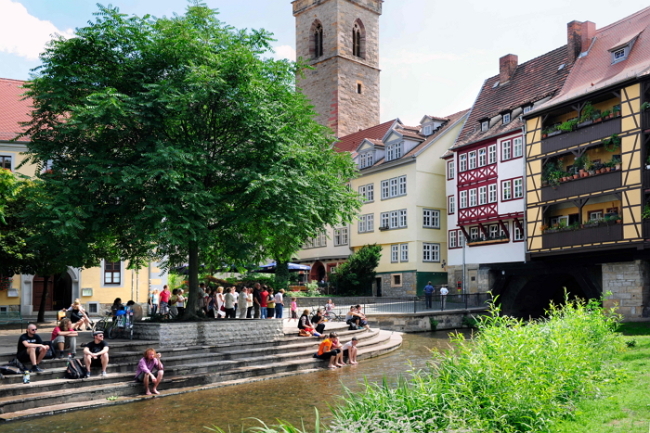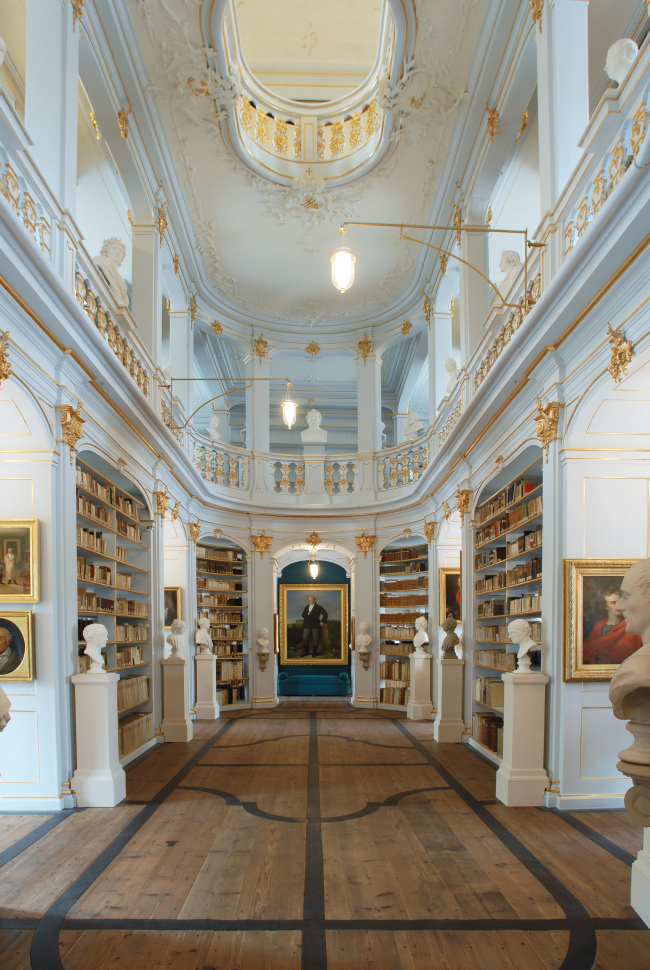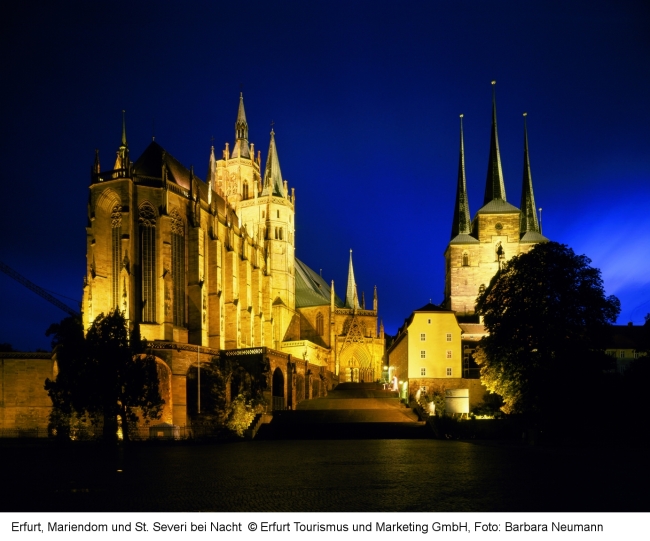Historic charm meets modernism in Thuringia
Discover the land of great thinkers and artists - Luther, Bach, Goethe and Schiller
By Shin Ji-hyePublished : May 15, 2015 - 18:50
THURINGIA, Germany ― Thuringia, one of Germany’s 16 states, may not be familiar to non-Europeans. But this small state of 2.3 million, located in central Germany, holds a special place in the country’s cultural and intellectual history: Great thinkers and artists like Luther, Bach, Goethe and Schiller all lived here for many years. Vestiges of their homes and working places are scattered around the state, most of them still in use as museums, churches or meeting places.
As the capital city of Thuringia, Erfurt boasts one of the best preserved medieval city centers with more than 1,200 years of history.
“Here in the city, Kramerbrucke (Merchants’ Bridge) is a must-visit place,” said Barbel Gronegres, managing director of Thuringia Tourist Board. The 125-meter long bridge spans the River Gera, supported by seven mighty stone arches. The bridge, the longest of its kind in Europe, is completely covered by 32 houses ― mostly artisans’ and antique shops. A walk on the bridge offers a close-up view of how Thuringian master craftsmen work.
As the capital city of Thuringia, Erfurt boasts one of the best preserved medieval city centers with more than 1,200 years of history.
“Here in the city, Kramerbrucke (Merchants’ Bridge) is a must-visit place,” said Barbel Gronegres, managing director of Thuringia Tourist Board. The 125-meter long bridge spans the River Gera, supported by seven mighty stone arches. The bridge, the longest of its kind in Europe, is completely covered by 32 houses ― mostly artisans’ and antique shops. A walk on the bridge offers a close-up view of how Thuringian master craftsmen work.

Another official at the tourism board said travelers, visiting the place on the third weekend of June, can enjoy the Kramerbruckenfest (Merchants’ Bridge Festival) carried out on and around the bridge. The festival highlights occur on Saturday night (June 20) against the background of Erfurt’s two magnificent historic buildings St. Mary’s Cathedral and St. Severus Church.
Erfurt holds traces of Martin Luther, a seminal figure in the Protestant Reformation. He spent his childhood in the city and studied at the University of Erfurt. The Augustinian Monastery, where Luther served as a monk after joining the order, is now used as a conference and exhibition center, but prayer cells, the library and other artifacts from Luther’s time are all there inside monastery, open to travelers.
Within a 30-minute drive from Erfurt lies Weimar, home to a handful of UNESCO Heritage sites.
“Weimar is a city where the largest number of UNESCO World Heritage Sites are located within a small area,” said a Dutch tour guide, Renee, who has lived in Weimar for six years.
A total of 16 sights and objects ― some belonging to the Weimar Classicism complex and others the Bauhaus complex ― are inducted on the UNESCO list.

The Weimar Classicism complex consists of multiple structures related to Weimar Classicism ― a German literary and cultural movement from 1772 until 1805. It involved intellectuals such as Johann Wolfgang Goethe, Johann Gottfried Herder, Friedrich Schiller and Christoph Martin Wieland.
The houses of Goethe and Schiller, who were close friends with each other, are only a few hundred meters away.
Another vestige of Classical Weimar, recommended by the tourism board, is the Duchess Anna Amalia Library. Restored after a devastating fire in 2004, the historic building houses such literary treasures as the original Luther Bible. To stand in the beautiful Rococo Hall of the library amidst books and stunning works of art is an absolute must while in Weimar.
Weimar is also known for the Bauhaus Museum and the Bauhaus University. Those who are interested in arts will be amazed by the works of Walter Gropius, founding director of Bauhaus, the most influential modernist art school of the 20th century. The school’s approach to teaching, and to understanding art’s relationship with society and technology, had a major impact both in Europe and the United States long after it closed.
“This room designed by Gropius is furnished as it originally was as the director’s room,” a student of the Bauhaus University said, showing the room with a variety of colors such as saffron-yellow, walnut red, gray and terracotta.
Eisenach is another famous city of Thuringia, located 50 kilometers west of Erfurt. It is where Johann Sebastian Bach was born and spent half his life. Every year, Bach lovers visit the Bach House, a museum dedicated to the composer, and enjoy concerts inside. Opened in 1907, the museum features a foyer, music demonstrations in the Instrument Hall, Bach House garden and biographical exhibits.
The Bach House is also used as a location for regional music festivals, such as Thuringer Bachwochen, which starts the week before Easter and lasts three weeks, Guldener Herbst in October, and Eisenacher Telemann-Tage, held in the summer on even-numbered years, according to the Thuringia Tourism official.

Eisenach is best known for Wartburg Castle, the probably most famous fortress in Thuringia. The castle, originally built in the Middle Ages, is situated on a 410-meter precipice to the southwest of Eisenach and overlooks the town.
Home to St. Elizabeth, who aided the sick and the poor in the 13th century, Wartburg Castle has been a UNESCO World Heritage Site since 1999. Outside the castle, the beautiful scenery of Eisenach can be seen at a glance. Inside, medieval features such as a knight’s bath and a well remain.
The place also played an important role in the Protestant Reformation. When Martin Luther was deported by the empire after accusing the Roman Catholic Church of selling indulgences to raise money, he stayed there in hiding for nine months and translated the New Testament from Greek into German. Travelers can visit the original room where he translated the Bible.
If you go:
There are no direct flights from Korea to Erfurt, but at least three airlines ― Korean Air, Asiana Airlines and Lufthansa ― fly direct from Incheon to Frankfurt every day. From Frankfurt Airport, Erfurt is well connected by bus, train and plane. By train, it takes around 1 1/2 hours.
By Shin Ji-hye, Korea Herald correspondent (shinjh@heraldcorp.com)









![[Hello India] Hyundai Motor vows to boost 'clean mobility' in India](http://res.heraldm.com/phpwas/restmb_idxmake.php?idx=644&simg=/content/image/2024/04/25/20240425050672_0.jpg&u=)









